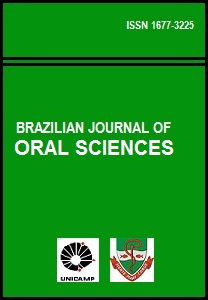Abstract
Aim: The aim of this study was to assess the thermoplasticity of materials used in root canal filling. Methods: Specimens with standardized dimensions were fabricated using Tanari, Roeko and Activ Point gutta-percha cones, as well as Microseal and TC gutta-percha. After 24 hours, the specimens were placed in water at 70 ºC for 60 seconds and positioned between two glass slabs. Each set was compressed by a 5 kg weight. Digital images of the specimens before and after compression were obtained and analyzed. The thermoplasticity was evaluated based on the difference between the final and initial areas. Data were statistically analyzed using ANOVA and Tukey’s tests at a 5% significance level. Results: TC and Microseal gutta-percha presented the highest thermoplasticity (p < 0.05). Among the gutta-percha cones, Tanari and Roeko presented the highest thermoplasticity and differed when compared to Activ Point (p < 0.05). Conclusions: The results of the present study showed that TC and Microseal gutta-percha filling systems present better thermoplastic properties.The Brazilian Journal of Oral Sciences uses the Creative Commons license (CC), thus preserving the integrity of the articles in an open access environment.
Downloads
Download data is not yet available.

